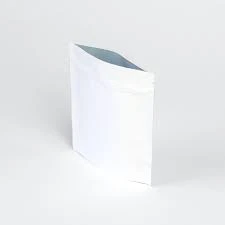Creative and Stylish Packaging Solutions for Cosmetics and Beauty Products
The Importance of Cosmetic Boxes in the Beauty Industry
In the ever-evolving world of beauty and cosmetics, packaging plays a crucial role in consumer decision-making. Among various kinds of packaging, cosmetic boxes stand out, not only as a protective shell for the products but also as a vital marketing tool. These boxes serve multiple purposes, from ensuring product safety to enhancing brand identity, and their significance cannot be overstated.
1. Protection and Preservation
The primary function of cosmetic boxes is to provide protection for the products inside. Cosmetics, such as creams, powders, and liquids, can be sensitive to light, temperature, and environmental conditions. High-quality packaging ensures that the products maintain their integrity and efficacy until opened. For example, air-tight boxes prevent exposure to pollutants and contaminants, preserving the cosmetic's formula and extending its shelf life. Moreover, sturdy boxes prevent damage during transportation and handling, ensuring that products reach consumers in pristine condition.
2. Brand Identity and Aesthetics
Cosmetic boxes are essential for creating a distinct brand identity. In a saturated market filled with numerous products vying for attention, unique and appealing packaging can make a significant difference in attracting consumers. A well-designed cosmetic box with a captivating color scheme, logo, and graphics can communicate the essence of the brand and its values instantly. For instance, luxury brands often opt for elegant and minimalist designs that evoke a sense of sophistication and exclusivity. In contrast, eco-friendly brands might use sustainable materials and natural colors to reflect their commitment to sustainability. The design of cosmetic boxes creates a visual experience that resonates with consumers, making them more likely to choose one product over another.
Cosmetic boxes also serve an educational purpose. They provide essential information about the product, including ingredients, usage instructions, and benefits. Consumers today are more informed and conscious about what they apply to their skin; therefore, including detailed product descriptions helps build trust and transparency. Boxes that highlight natural ingredients, cruelty-free testing, and dermatological approvals can enhance the consumer's confidence in the product. Additionally, regulatory requirements often mandate that certain information is included on packaging, making these boxes crucial for legal compliance.
cosmetics boxes

4. Sustainability Trends
With increasing awareness of environmental issues, sustainability has become a significant trend in the cosmetics industry. Many consumers prefer brands that demonstrate a commitment to reducing their ecological impact. This shift has led to a rise in companies using recyclable, biodegradable, and eco-friendly materials for cosmetic boxes. Brands that incorporate sustainable practices in their packaging not only appeal to environmentally-conscious consumers but also contribute positively to their brand image. As sustainability becomes more critical, cosmetic companies are innovating to create packaging that meets consumer expectations while minimizing environmental impact.
5. Customization and Personalization
In today's consumer-driven market, customization and personalization have gained immense popularity. Brands are starting to offer personalized cosmetic boxes tailored to individual preferences, which enhances the customer experience. For example, consumers can choose their box design, colors, or even include their names, making the purchase feel unique and special. This level of personalization fosters emotional connections with the brand, encouraging customer loyalty and repeat purchases.
6. E-commerce Adaptation
The rise of e-commerce has transformed how cosmetic boxes are designed and utilized. With more consumers shopping online, packaging must be both visually appealing and functional. Cosmetic boxes now often feature designs that prevent damage during shipping, while still maintaining their aesthetic appeal. Additionally, brands are increasingly focusing on unboxing experiences, creating excitement and anticipation for consumers when they receive their products. This includes the inclusion of thank-you notes, samples, or special designs that make the unboxing experience memorable.
Conclusion
In conclusion, cosmetic boxes are more than just containers for beauty products; they are multifunctional tools that play a crucial role in protecting the product, conveying brand identity, educating consumers, and adapting to modern trends. As the beauty industry continues to evolve, the importance of innovative and sustainable packaging solutions will only grow. Brands that prioritize the design and functionality of their cosmetic boxes will likely thrive in this competitive landscape, as they create products that resonate with informed and environmentally conscious consumers.













